by Margaret Nolen Nichol, 2007
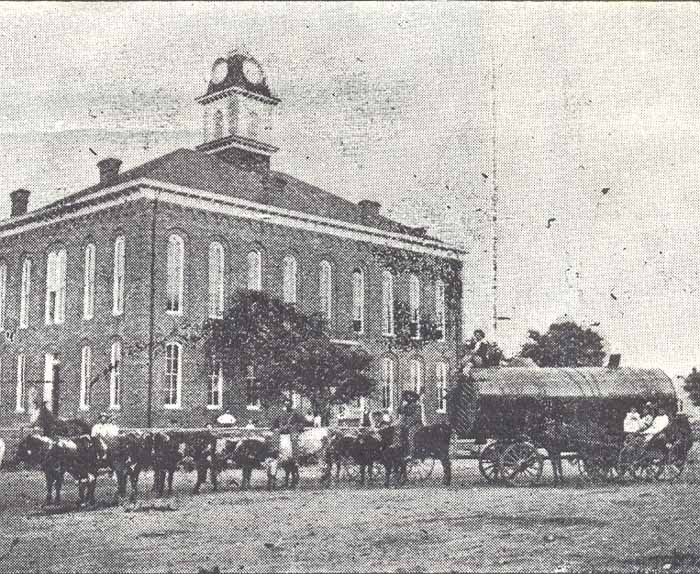
At times it might be good to look back at the past and see what lessons can be learned that we can apply to today’s times. A close look at the small township of Alamo, Tennessee during the turn of the 20th century reveals a thriving place where every need for the community seemed to have been met. The magnificent Italianate courthouse had been built and formed the centerpiece of the town and the businesses formed a complete square around it. Architect, John Archer, of Brownsville, an Englishman who had only been in America four or five years, had been chosen to draw the design and E. R. Crandall had been the contractor. The building was fifty-five by ninety-six feet and had two stories with four fronts and a clock tower. The four churches located just off the square had already been established and were to prove to be the religious foundation for the town.
The beginning of the 1900s found Alamo with many improvements yet to be made, but the elected officials seemed to have been up to the task of looking to the future for providing the necessary roads, electricity, telephones and water supply to maintain the town and it grew in size as those things were accomplished. In 1900, the roads were gravel, and the water supply, at that time, was gotten by sinking wells 23 to 60 feet at any place in the town. The water was freestone, pure and abundant. Kerosene and Aladdin lamps afforded the necessary lighting for the homes. No indoor plumbing was to be found but outdoor privies were located at every household.
A branch of the Louisville and Nashville railroad, the Memphis and Bowling Green line, ran through Alamo providing access to any place in the country. John Gilliam was railroad contractor. Thomas Norvell was listed as engineer. During this period, buggies, wagons, and horseback were the other means of transportation.
The Bank of Alamo had been formed with Mr. P. B. Nance, of Alamo, president; Mr. C. B. Ferrell, of Humboldt, Vice President; and D. B. Dodson, of Alamo, Cashier. The building the bank occupied is on the National Historic Registry today.
The Alamo Sentinel furnished the citizens the news of the day. Mr. D. W. Harris and his sons, D. Wells and William Harris were Editor and Printers of the paper. D. Well Harris had invented a new Colter Fastener, Grass Rod and Shovel plough which was declared a big improvement over the former Colter Fastener. He patented it in 1902 and was successful in marketing it.
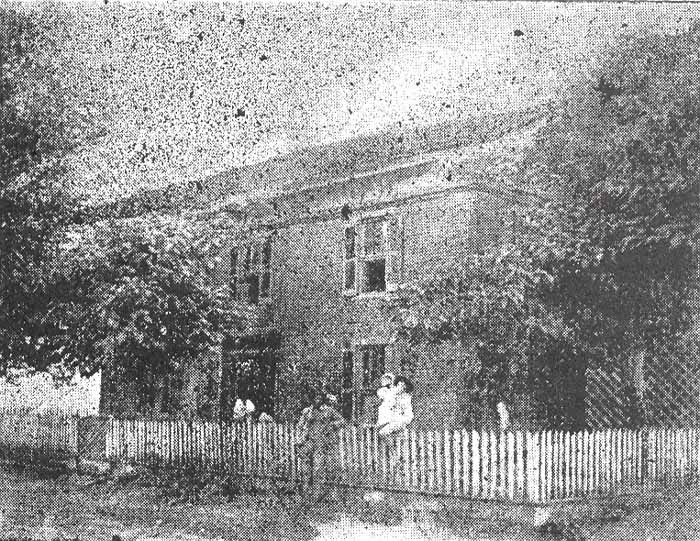
Sheriff R. L. Conyers, wife, and son Herman were residing in the practically new Jail. At the time of the 1900 census it held five additional residents of the county. This jail stood at the corner of East Park and South Mill Streets.
Four miles west of the town, Mr. D. W. Cates and family were living at the County Poor House, where he was superintendent of the institution and, also, farming the 90 acres of land that had been purchased for the purpose. Eight paupers were listed living on the farm at that time.
Four miles west of the town, Mr. D. W. Cates and family were living at the County Poor House, where he was superintendent of the institution and, also, farming the 90 acres of land that had been purchased for the purpose. Eight paupers were listed living on the farm at that time.
The Alamo school system had been set up and a building built for the educating of the children of the town. Miss Pearle Henderson, daughter of Emma Henderson; Miss Hallie Baldridge, daughter of James Baldridge; Miss Harriet Mitchell, daughter of Mr. Parker Mitchell, Bertha and Jennie Conley, daughters of Mr. Columbus Conley; James and Adena Evans, son and daughter of Mr. Thomas Evans; and Mrs. Lela Jetton, daughter of Mary Pittman, were listed as teachers in the school. Miss Alma Johnson, daughter of Mrs. Eva Johnson; and Jammie Revell, daughter of Mr. Isaac Revell, music teachers, were adding to the culture of the town.
On the South side of the public square, Mr. Robert and Mrs. Georgia Fouche’s hotel and grocery stood. It was a very popular hostelry and catered to the citizens of the town.
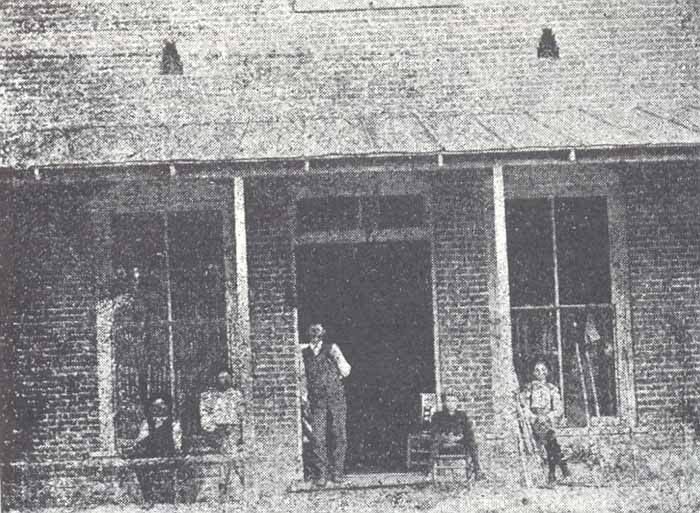
On the south side of the square stood the building housing T. G. Johnson and Bros Drug and Grocery Store. This store dates back to the early days when Alamo had been named Cageville,. The store was established by Isaac Johnson and Lycurus Cage, founders of Cagevillle.
On the West side of the square Rev. J. B. McCutcheon had his store that was “at the bottom on prices and on top on grade.” His store carried a good line of drugs, groceries, hardware, and Queensware. Rev. McCutcheon was well trained in the art of selling having been in business in the town for a number of years. Prior to becoming a merchant he served as pastor for Alamo Methodist Church, South during 1865-66; and again in 1868-69.
Also, on the West side of the square was found the firm of Cates Brothers. The three brothers, G. W. Cates, Humboldt, Wash Cates and John Cates , of Alamo, were the original partners in the firm, but Mr. Wash Cates and Mr. John Cates had bought out Mr. G. W. Cates and were in business for themselves.
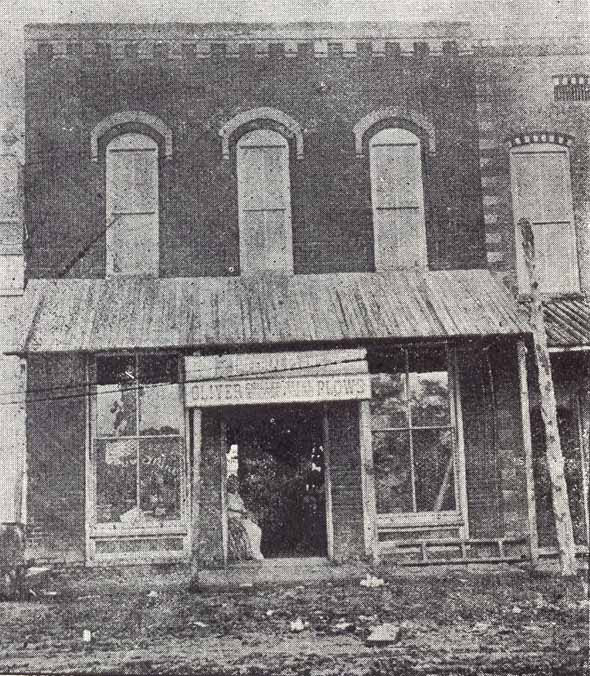
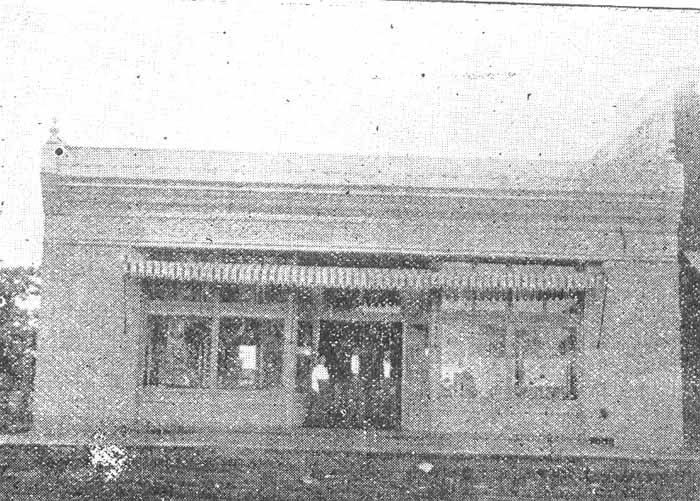
J. W. Perry and Company occupied a newly built store on the west side of the square that is said to have equaled any store in West Tennessee with its large and commodious space and handsome show cases tastefully arranged. It included a millinery shop under the supervision of Miss Vesta Lastley, a skilled and accomplished milliner from Louisville, Kentucky. Partner in the company was Mrs. J. M. Klyce.
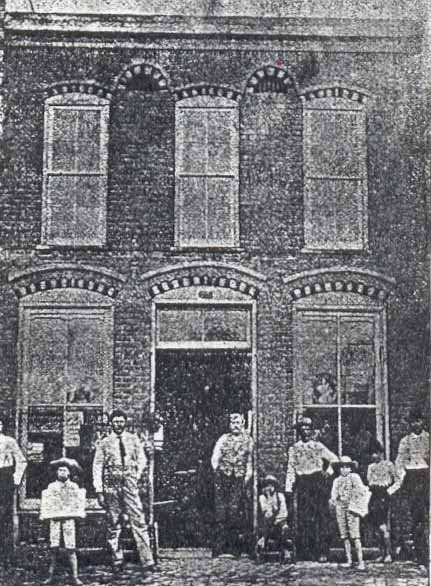
Mr. W. B. Cannady, served as Register of Deeds for the county before opening his store which had a large and prosperous business on the West side of the square. He carried a fine stock of groceries, hardware, cutlery, tableware, tinware, bridles, saddles, and farming implements. His stocks were always the fullest and best the market could afford. Mr. Jim Midyette was salesman in the store.
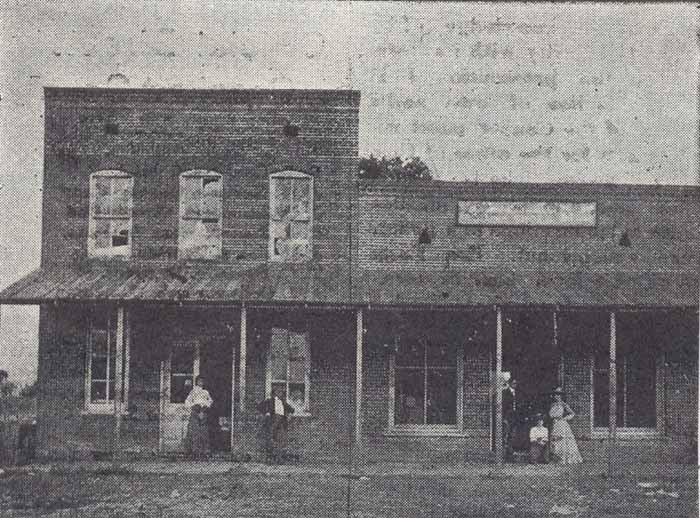
Located on the Southeast corner of the square was the Alamo Dry Goods company. The company was a stock company chartered under the laws of the state. Mr. P. B. Nance was President, W. S. Corbett was Vice President and Treasurer, and H. B. Nance was Secretary. The business was carried on in two adjoining buildings, one of them having two stories. Dry goods, clothing, furniture and etc. were sold in the stores.
Other merchants in the town were William Connally, King Burgin, Virgil Tucker, and Mannie Klyce.
Alamo was fortunate to have during that period several physicians practicing in the town. Dr. Andrew Hicks, Dr. J. H. Clay, Dr. R. W. Fleming, Dr. William King, who was boarding in the home of Mr. John Farrow, and Dr. Henry W. Cook were listed in the 1900 census as physicians.
Being the county seat of Crockett County, several lawyers practiced in the town. Mr. William F. Poston, Mr. Frederick Taylor, Mr. Isaac Revell, Mr. James Patterson, Mr. Herman Austin, and Mr. Caswell Goodloe, lawyers, along with Mr. David B. Dodson, County Court Clerk, Mr. John Dodson, Deputy Court Clerk, and Mr. Hallum W. Goodloe, Clerk and Master rounded out the courthouse scene.
Ministers to fill the pulpits of the churches in the town were: Daniel Potts, James C. Wilson, Henry Anusum and Thomas Laman. Additional ministers could have been serving the churches, but these are the only ones listed in the 1900 census.
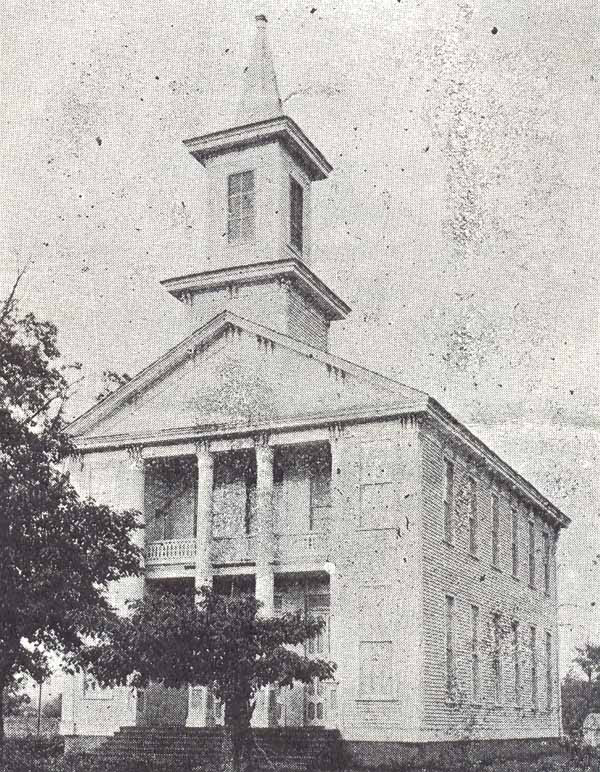
The Methodist Episcopal Church, South was the first church to build in the town, in 1849. The original building was moved across Johnson Street and a building was constructed on the original site, in 1866. This was build by the Methodist church and the Odd Fellows and Masons who held their meeting in the upper floor of the church until the church bought out their interest. Crockett County’s first County Court sessions were held in the building until 1873 when the records were moved to a warehouse until the completion of the courthouse, in 1875. This building was later replaced with a brick edifice which still stands today. Reverend James Calvin Wilson was the pastor, during the first half of 1900. His household consisted of Sally, his wife, and children, Lizzie, James. Virgie, and Wray Wilson and Reverend Wilson’s cousin, Lena Wilson. Rev. J. G. Burke served the church the latter half pf 1900, and the first half of 1901.
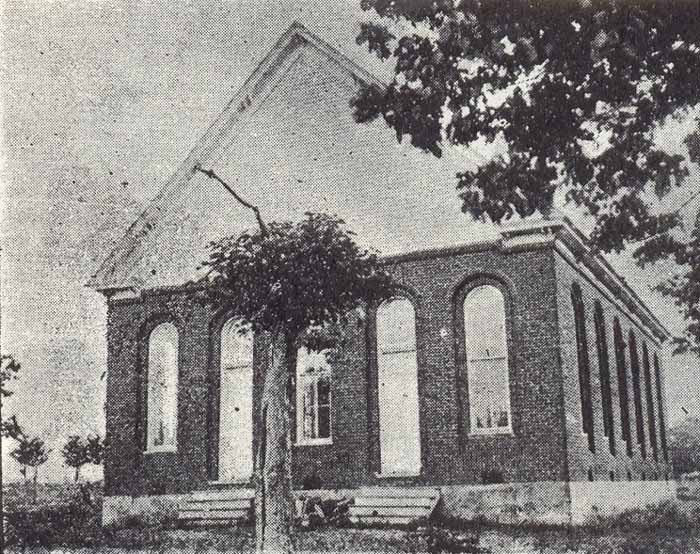
Following closely behind the Methodist were the members of the Christian Church denomination. Their first church was built in 1858 and was located on West Church Street. It was sold in 1878 to the 1st Baptist Church and a new church was built on west Main street.
The original congregation of Alamo Church of Christ meet in a church on Poplar Street until it split into the Alamo First Christian Church and the Alamo Church of Christ. The Alamo Church of Christ later moved to a brick building on West Main Street just off the town square.
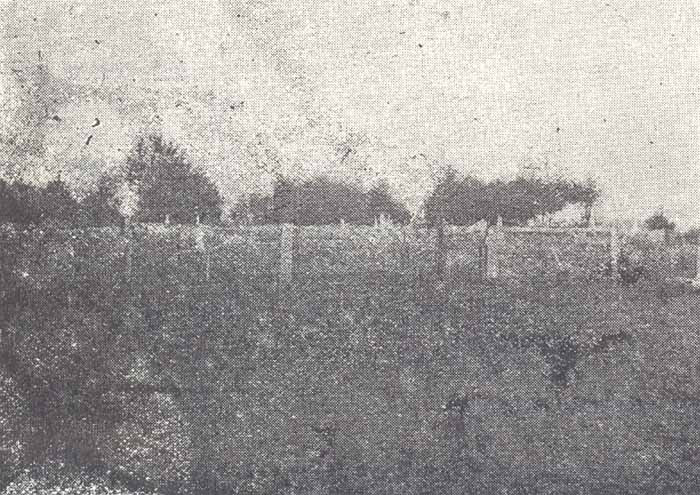
The Alamo City Cemetery was located on South Branch Street, between West Park and West Vine. The oldest recorded burial in the Alamo City Cemetery was James Wesley McFarland who died February 17, 1851, and preceded his father, Major John M. McMcFarland, who died in 1870. There is a discrepancy in the dates given for Rev. James W. McFarland. The Annals of Southern Methodism gives his death date, 17 Jul 1854. He was serving at Asbury Methodist Episcopal Church, South located on the corner of Hernando and Linden Streets in Memphis at the time of his death. The annals stated that he was taken to Cageville and buried beside his beloved daughter (name not given) and other relatives, which indicates that there were other burials in the city cemetery prior to the burial of James W. McFarland. The proximity to the early Church of Christ Church that sat on the corner of Poplar street and West Park across from the cemetery might indicate that the cemetery had a connection to the church at that time. This church was in existence before the church split into the Alamo Christian Church and the Alamo Church of Christ. The next oldest recorded burial, in the cemetery, was George W. Farrow, (one year old) October 28, 1859; followed by Jesse L. Roberts, age 10, on November 5, 1860; and Johnson L. Howell, November 5, 1861. A family tragedy is revealed in the early 1860s when twin sons, Richard D. Curtis and unnamed son Curtis, born June 30, 1861, died on the same day, July 23, 1861. Recorded deaths of twin daughters, Julia A. Curtis (who was recorded born May 1, 1862 and Jerre M. Curtis, recorded born May 4, 1862) died on the same day, September 1, 1866. Their father, J. Samuel Curtis died June 26, 1864. Elizabeth Tucker Curtis was left a widow with twin daughters and pregnant with a daughter, Sametta, who was to be born, August 5, 1864. Elizabeth Tucker Curtis married, second, Ephraim Ellington who survived her and was heir to her property.
Mr. Charles C. Porter and Mr. William Woodward were blacksmiths in Alamo in 1900. Dabney Dodson was recorded as a carpenter. Comie Cooke was a seamstress; Lena Wilson and Ida J. Harper, dressmakers; Minnie McLemore, nurse; Mary B. Harris, Lida Roberts, Anna Worrell and Ada Worrell, milliners, John H. Hicks, mechanic; Milton Cates as a trader; and Celius Baldridge, teamster.
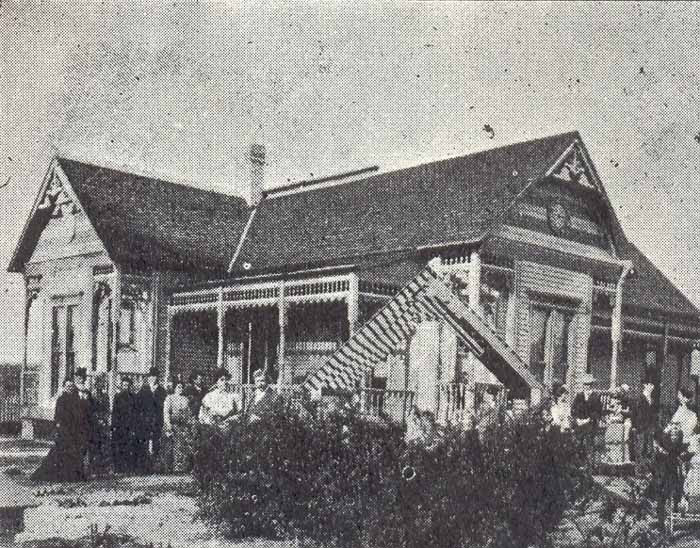
The home of Mr. And Mrs. J. E. Klyce, on Burns Street, offers a glimpse of a social occasion that occurred during the turn of the century. It could well be a meeting of the Women’s Missionary Society, which was a Methodist mission group.
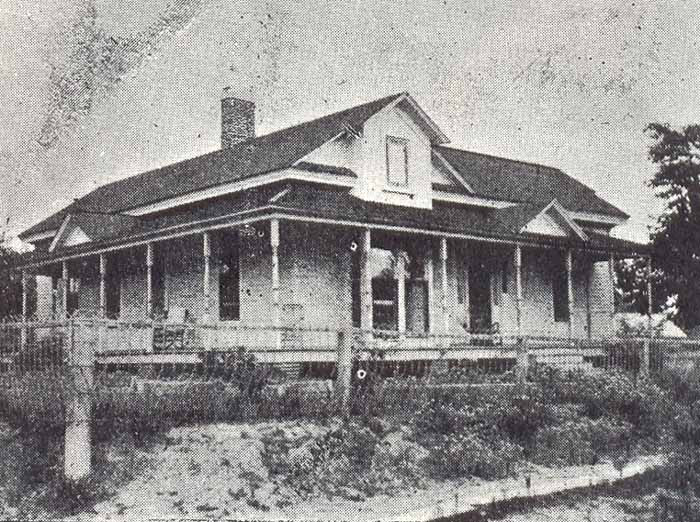
The W. S. Corbett stood on the corner of Main and Burns street. Its porches offered many opportunities for relaxing and recreation.
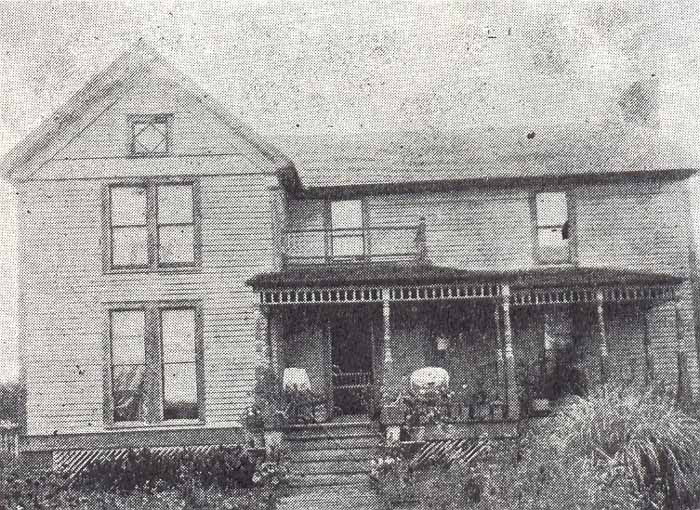
The home of Mrs. G. H. Winfield was located on Bells Street in Alamo, She was the mother of Drucilla McCutcheon, wife of Rev. J. B. McCutcheon local merchant. Drucilla McCutcheon taught Sunday school at the Methodist Episcopal Church, South and was much loved by her students.
By the time the 1900s arrived, the hardships of the pioneer days and the tragedy the Civil War had wrought on the area were past memories, and life had become a more leisurely way of living. The churches provided the foundation for the social intercourse between the town people. Until the invention of the automobile, the world had been a very small place for most of the Alamo residents, but shortly to follow would be World War I which would carry some of the young men to other places in the United States to train to fight in foreign lands. When they returned home from those foreign lands, they had learned that the world was as wide as the horizons and it would be difficult to adjust to the slower pace they had known before. The 20th Century was to experience the greatest advancement of a nation since the beginning of time, and it was necessary that towns, big and small, move along with the progress. Alamo seemed to have kept pace with the world very well, but one can still pine for those days of yesteryear when the world was a simpler place to live.
This article has been compiled using liberally the information from the reprinted Trades Issue of the Alamo Sentinel that was published in 1909. A great service was done by Mr. E. T. Dunlap when he had the paper reprinted for all to be able to share in those early times in Crockett County. The 1900 Census of District #6 was used to determine the occupations of the various residents of Alamo. Additional information for the write-up has been gleaned from various sources on the Internet and from my files. I grew up in Alamo and, although I was not born until 1925, I think I still have a sense of what the earlier period might have been like.